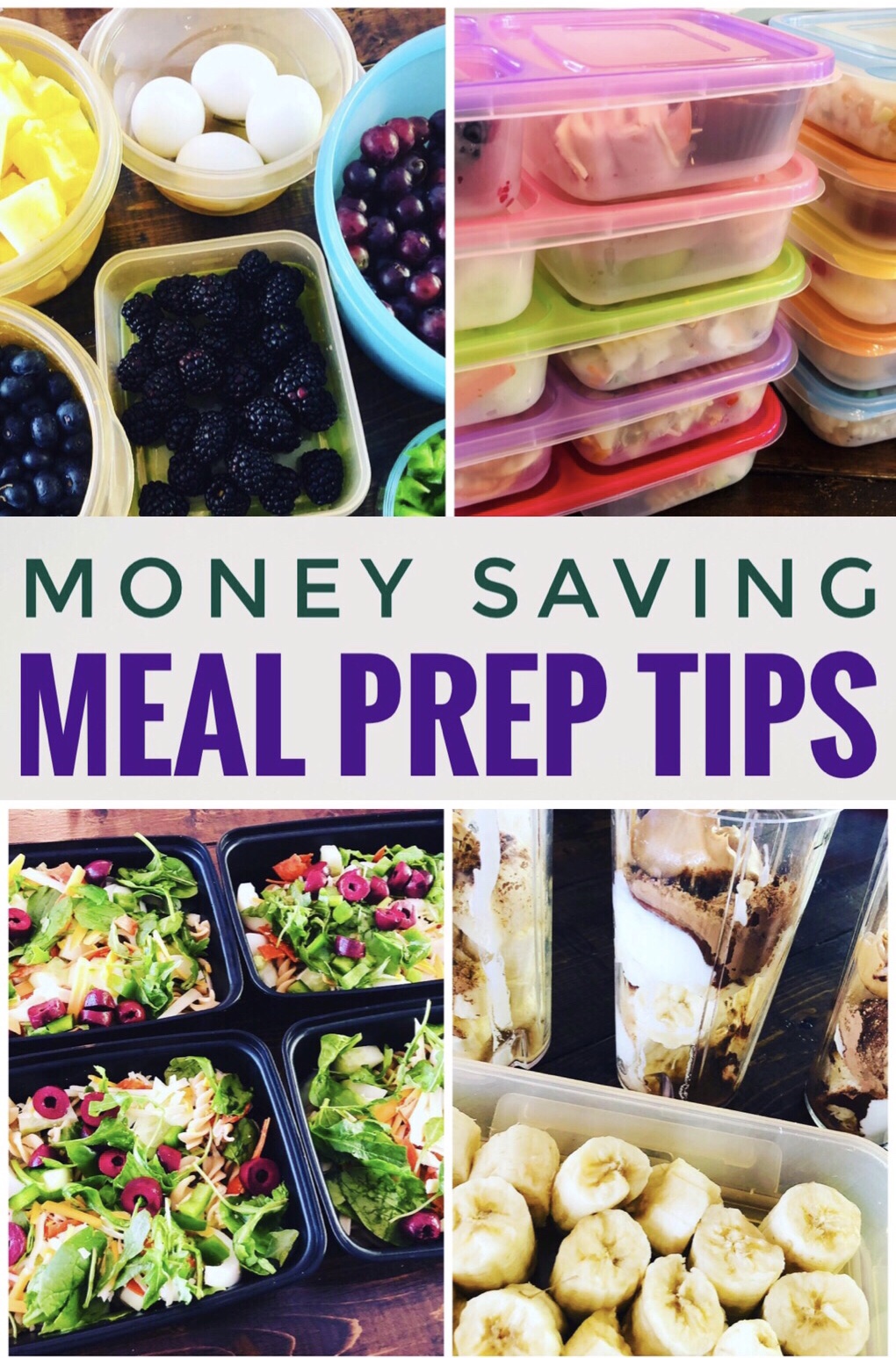
How to Meal Prep to Save Money: Your Ultimate Beginner’s Guide to Affordable, Healthy Eating
Are you tired of seeing your hard-earned money disappear on expensive takeout, impulse grocery buys, and wasted food? Do you dream of eating healthier without breaking the bank? If so, then meal prepping to save money is your secret weapon!
Many people think meal prepping is just for fitness fanatics or those with endless free time. The truth is, it’s a powerful strategy for anyone looking to cut down on food costs, reduce stress, and improve their eating habits. This comprehensive, beginner-friendly guide will walk you through everything you need to know to start your meal prep journey and watch your savings grow.
Why Meal Prep Is Your Wallet’s Best Friend
Before we dive into the "how-to," let’s understand why budget meal prep is such a game-changer for your finances.
- Drastically Reduced Grocery Bill: When you plan your meals, you buy only what you need. This eliminates impulse purchases and prevents ingredients from going bad before you use them. You’ll be amazed at how much you save by simply having a clear shopping list.
- Less Food Waste: Over 30% of food in the U.S. is wasted. Meal prepping ensures every ingredient has a purpose. Those wilting vegetables or forgotten leftovers become part of a delicious, pre-planned meal, rather than ending up in the bin.
- Fewer Takeaways and Restaurant Meals: When hunger strikes and you have a ready-to-eat, delicious meal waiting for you, the temptation to order expensive takeout or dine out significantly decreases. This is often the biggest financial win for meal preppers!
- Portion Control and Healthier Choices: Prepping allows you to control portion sizes, which is excellent for your health and also means your ingredients stretch further. You’re also more likely to choose nutritious, home-cooked food over processed options.
- Time Savings (Indirect Money Saving): While it takes some time upfront, meal prepping frees up countless hours during the week. Less time spent deciding what to eat, cooking every night, or waiting for food means more time for productive activities or simply relaxing – time that can be indirectly translated into money saved from not needing convenience solutions.
Getting Started: Essential Steps for Beginner Meal Preppers
Ready to dive in? Here’s a step-by-step guide to mastering affordable meal prep for beginners.
Step 1: The Power of Planning – Your Weekly Strategy
This is the foundation of saving money with meal prep. Don’t skip it!
- Check Your Pantry and Fridge: Before you even think about recipes, see what you already have. Use up lingering ingredients first. This prevents duplicate purchases and reduces waste.
- Browse Sales Flyers and Discounts: Many grocery stores release their weekly sales in advance. Build your meal plan around discounted proteins, seasonal produce, and pantry staples.
- Choose Simple, Versatile Recipes: For beginners, stick to recipes with fewer ingredients and straightforward cooking methods. Think:
- Staple Proteins: Chicken breast, ground turkey, eggs, lentils, beans, canned tuna.
- Versatile Grains: Rice, quinoa, oats, pasta.
- Robust Vegetables: Broccoli, carrots, bell peppers, sweet potatoes, cabbage, spinach.
- Consider "Component Prep": Instead of full meals, prep individual components (cooked chicken, roasted veggies, cooked rice). This allows for more mix-and-match variety throughout the week.
- Create Your Shopping List (and Stick to It!): Once you have your recipes, list every single ingredient you need, checking off what you already own. Organize it by grocery store aisle to save time and avoid impulse buys.
Step 2: Smart Shopping – Maximizing Your Budget
Your shopping trip is where the magic of saving money on groceries truly happens.
- Stick to Your List Religiously: This is rule number one. Those tempting displays at the end of aisles are designed to make you spend more.
- Buy in Bulk (Smartly): If you have storage space and know you’ll use it, buying non-perishables like rice, pasta, oats, and canned goods in larger quantities can save money. Be cautious with perishables unless you have a clear plan to use them.
- Opt for Generic or Store Brands: Often, the quality is comparable to name brands, but the price is significantly lower.
- Embrace Seasonal Produce: Fruits and vegetables are cheaper and tastier when they’re in season. Frozen fruits and vegetables are also excellent, often cheaper, and just as nutritious.
- Compare Unit Prices: Look at the "price per ounce" or "price per unit" label on shelves. A larger package might seem like a better deal, but unit pricing tells the real story.
- Limit Processed Foods: These are generally more expensive and less nutritious. Focus on whole, unprocessed ingredients.
Step 3: Efficient Cooking – Batching for Success
Now for the hands-on part! This is where you transform your ingredients into affordable, healthy meals.
- Designate a "Prep Day": Most people find that dedicating 2-4 hours on a Sunday (or another chosen day) makes the process smooth. Put on some music, and enjoy the process!
- Multi-Task Like a Pro:
- While rice is cooking, chop your vegetables.
- Roast vegetables and bake chicken in the oven simultaneously.
- Use multiple burners on the stove for different components.
- Keep Recipes Simple: You don’t need gourmet meals. Think sheet pan dinners, one-pot stews, or simple grilled proteins with a side of grains and veggies.
- Cook Staples in Bulk: Prepare a large batch of cooked grains (rice, quinoa), roasted vegetables, or a versatile protein (shredded chicken, ground beef/turkey) that can be used in multiple meals.
- Utilize Your Appliances: Slow cookers, instant pots, and air fryers can be huge time-savers, allowing you to "set it and forget it" while you work on other components.
Step 4: Proper Storage – Keeping Your Food Fresh & Safe
Good storage is crucial for making your prepped meals last and preventing food waste.
- Invest in Quality Containers: Airtight, microwave-safe, and freezer-safe containers are a must. Glass containers are excellent for longevity and reheating.
- Cool Food Completely Before Storing: Putting hot food directly into the fridge can raise the internal temperature of your fridge, potentially spoiling other foods and creating a breeding ground for bacteria. Let food cool on the counter for a bit, then transfer to containers.
- Portion Out Meals: Divide your cooked food into individual portions right away. This makes grabbing a meal quick and easy and helps with portion control.
- Label and Date Everything: Especially if you’re freezing. A simple label with the meal name and date cooked will save you guesswork later.
- Understand Shelf Life:
- Most prepped meals are good for 3-4 days in the refrigerator.
- Cooked grains and some cooked vegetables can last up to 5 days.
- Cooked meats typically last 3-4 days.
- If you won’t eat it within this timeframe, freeze it!
Beginner-Friendly Meal Prep Ideas for Every Budget
Looking for inspiration? Here are some simple, cheap meal prep ideas that are versatile and delicious:
- Chicken & Roasted Veggies with Quinoa:
- Roast a big batch of chicken breasts or thighs with chopped broccoli, bell peppers, and sweet potatoes. Cook a large pot of quinoa. Mix and match for easy lunches and dinners.
- Lentil Soup or Chili:
- Inexpensive, hearty, and freezes beautifully. Make a big pot and portion it out. Serve with a side of whole-wheat bread or a sprinkle of cheese.
- Overnight Oats:
- Mix rolled oats, milk (dairy or non-dairy), chia seeds, and your choice of fruit/sweetener in individual jars. Prep 3-5 jars at once for quick, healthy breakfasts.
- Pasta with Versatile Sauce:
- Cook a large batch of whole-wheat pasta. Prepare a simple tomato sauce with ground turkey or lentils. Store sauce and pasta separately, combining when ready to eat to prevent sogginess.
- Hard-Boiled Eggs & Fruit/Veggie Sticks:
- Perfect for quick snacks or adding protein to salads. Boil a dozen eggs at the start of the week. Pair with pre-cut carrots, celery, or apple slices.
- Burrito Bowls:
- Cook brown rice, black beans, and ground meat (or plant-based crumbles). Chop lettuce, tomatoes, and onions. Assemble bowls fresh each day with a dollop of salsa or Greek yogurt.
Troubleshooting Common Meal Prep Challenges
It’s okay if you hit a snag! Here’s how to overcome common beginner hurdles.
"I Get Bored!" – Adding Variety to Your Meals
- Change Up Seasonings and Sauces: The same chicken and rice can taste completely different with a new spice blend (taco seasoning, Italian herbs, curry powder) or sauce (hot sauce, pesto, BBQ sauce, lemon-tahini dressing).
- Rotate Your Meals: Don’t eat the exact same thing every day. Plan for 2-3 different meals per week to keep things interesting.
- Incorporate Fresh Elements: Add fresh herbs, a squeeze of lime, or a sprinkle of nuts right before eating to brighten up prepped meals.
- Component Prep: As mentioned, prepping individual components allows for more flexibility and creativity in daily assembly.
"It Takes Too Long!" – Time-Saving Hacks
- Start Small: Don’t try to prep every single meal for the entire week on your first try. Start with just lunches, or 3 dinners.
- Utilize Pre-Cut Ingredients (When Sales Allow): While often more expensive, sometimes pre-cut veggies are worth it if they prevent you from ordering takeout. Look for them on sale.
- One-Pot/One-Sheet Pan Meals: These minimize cleanup and prep time.
- Listen to a Podcast or Music: Make prep time enjoyable, and it won’t feel like a chore.
"What About Food Safety?" – Reheating & Shelf Life
- Reheat Thoroughly: Always reheat food until it’s steaming hot throughout (165°F or 74°C).
- Use Within Recommended Timeframes: As a general rule, prepped meals are best eaten within 3-4 days when stored in the refrigerator.
- Trust Your Senses: If food smells off, looks slimy, or has mold, throw it out. When in doubt, throw it out.
Pro Tips for Long-Term Meal Prep Success
Once you’ve got the basics down, consider these tips to make meal prepping a sustainable habit.
- Start Small and Build Up: Don’t overwhelm yourself. Master prepping one or two meals for a few days before attempting a full week of all meals.
- Invest in Good Tools (Gradually): Quality containers, a sharp knife, a good cutting board, and perhaps a slow cooker or instant pot will make the process much easier and more enjoyable. You don’t need everything at once.
- Involve Your Family: Get kids involved in chopping or packing. This teaches them valuable life skills and makes them more likely to eat the meals.
- Track Your Savings: Keep a simple spreadsheet or note on your phone. Seeing the actual money you’re saving can be incredibly motivating!
- Be Flexible: Life happens! If you miss a prep day or plans change, don’t beat yourself up. Adjust and get back on track next time. The goal is progress, not perfection.
Start Saving Money (and Your Sanity) Today!
Meal prepping to save money isn’t just a trend; it’s a practical, sustainable lifestyle change that offers immense benefits for your wallet, your health, and your peace of mind. By taking a little time to plan and prepare, you gain control over your spending, eat healthier, and free up precious time during your busy week.
Ready to transform your relationship with food and money? Pick one tip from this guide and implement it this week. You’ll be amazed at the difference it makes! Happy prepping!



Post Comment